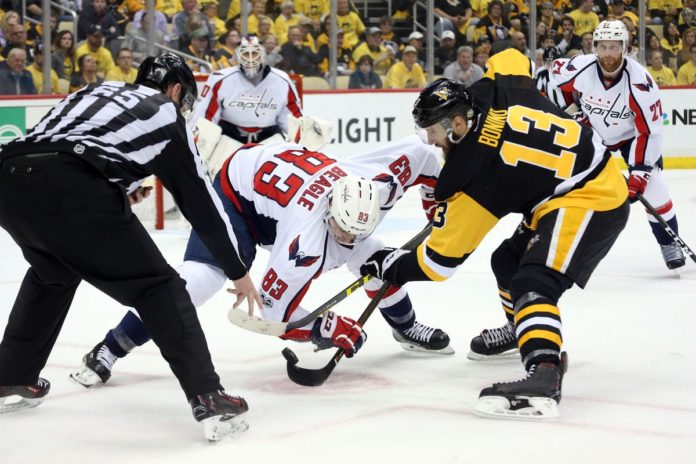Pittsburgh Penguins, acknowledged as one of the best offensive hockey teams, recently showed a glimpse of their potential in Game 5 versus Ottawa Senators winning with a 7-0 game. The margin of victory was the largest since Detroit beat Colorado in Game 7 in the Western Conference finals. Founded in 1967, the Penguins, also known as the Pens, have qualified for five Stanley Cups and won four times (in 1991, 1992, 2009 and 2016).
As amazing as they are today, their road to greatness is filled with defeat, challenges, and hurdles. Jack McGregor, a State Senator from Kittanning, PA began the process of lobbying and campaigning in the spring of 1965. This led to the formation of the Penguins in 1967. On September 13, 1967 the Pens played their first exhibition match against Philadelphia Flyers in Brantford. The Pens were an expansion team and restrictive rules kept most major talent to the ‘Original Six’ teams. Their team mostly comprised of former minor leaguers.
Early on, the Pens did manage to defeat a team from the Original Six teams but they finished fifth in the West Division and missed the playoffs. Giving them the third worst record in the league. In the 1967-68 season, the team’s performance declined and they dropped to sixth place, with the league’s worst record. This forced them to make some drastic changes. Several players were traded and newer players made their debut. The team did not, however, name a new captain and went with four alternate captains.
In the 1969 draft, Michele Brier was chosen by the Pens. Briere’s performance boosted the team’s output and they managed to acquire their first playoff berth for Pittsburgh since the 1928 Pirates. The team did make it to the semi-finals but lost to St. Louis Blues. Things were looking good for the Pens but tragedy struck and Briere ended up in a car crash and a coma from which he would not recover.
The following season, the Pens finished five games out of the playoffs and got the fourth worst record in the league. In 1972, they did manage to acquire a playoff berth but were eliminated by the Chicago Black Hawks in the first round.
In early 1975, the Pens faced their darkest hour when the creditors demanded payments. This forced the team into bankruptcy. The doors to the team offices were padlocked and it appeared that the team would either fold or relocate. However, through the intervention of a certain group, the team did not fold and remained in Pittsburgh; they were later bought by the shopping mall magnate Edward J. DeBartolo Sr.
In the mid-70s, the Pens were in and out of the big league. They got to the semi-finals of the Stanley Cup in 1975 but lost. In 1982, the Pens managed to hold a 3-1 lead against the reigning champions. However, the champs made their comeback and the Pens were not seen in the playoffs until 1989. The team also made the decision of changing their color scheme to the now familiar black and gold.
In the 80s, the Pens managed to acquire some great talent on the ice but they still struggled to make the playoffs. They finally made it to the 1989 playoffs with Mario Lemieux playing on the team. They beat the New York Rangers but they got eliminated in the second round by the Philadelphia Flyers. Lemieux’s career was cut short due to a herniated disc.
Once again, the Pens decided to make some major roster changes. They signed free agents and traded players. The biggest change came in the 1990 NHL Entry draft when they drafted Jaromir Jagr with the fifth overall pick. Jagr quickly proved himself to be a superstar offensive player.
The disruption in their roster transformed the team into the Stanley Cup champions. They managed to score an 8-0 in the finals against the Minnesota North Stars. This margin of victory happened to be the largest in 80 years. After 1991, they also became the first NHL team to visit the White House and meet the president. The next year, they bagged yet another championship.
The years that followed were once again challenging for the Pens. However, they still managed to make their way into the playoffs of the following seasons despite the departure of their star players. 1997 marked the downfall of the Pens once more when they ended up eliminated at the hands of the Philadelphia Flyers in the first round.
In the 2000s, the team once again faced bankruptcy but were saved again. Enduring bankruptcy and moving on, the team moved back and forth in terms of performances. Losing players but making changes to accommodate the loss. After facing a lot of pressure and challenges, the team returned to their former glory in 2009 and won the Stanley Cup Championship once more. They repeated their pattern, giving tough calls to the competition but didn’t manage to win another championship until 2016.
The latest story about the Pens was that they were having a difficult postseason. The Ottawa Senators were giving them a really tough time with their 1-3-1 formation. However, the Pens fought back by disrupting their roster, making changes and adapting to the challenge of their competition. This led to the scenario of Game 5, where they achieved a dominating victory and brought their competition to the brink of elimination.
This year’s defending champions and offensive team, the Pittsburgh Penguins, are back at it again with their former flare resonating in their performance. It’s been their legacy to meet challenges with the adaptive ability to fight against adversity and win. The Pittsburgh Penguins embody the concept of “Strive.”
Will they have what it takes to reclaim the championship? Will their roster change play out for them again? Only time will tell but history has shown that it certainly did.
Sign up to be notified when the Strive book becomes available.


















